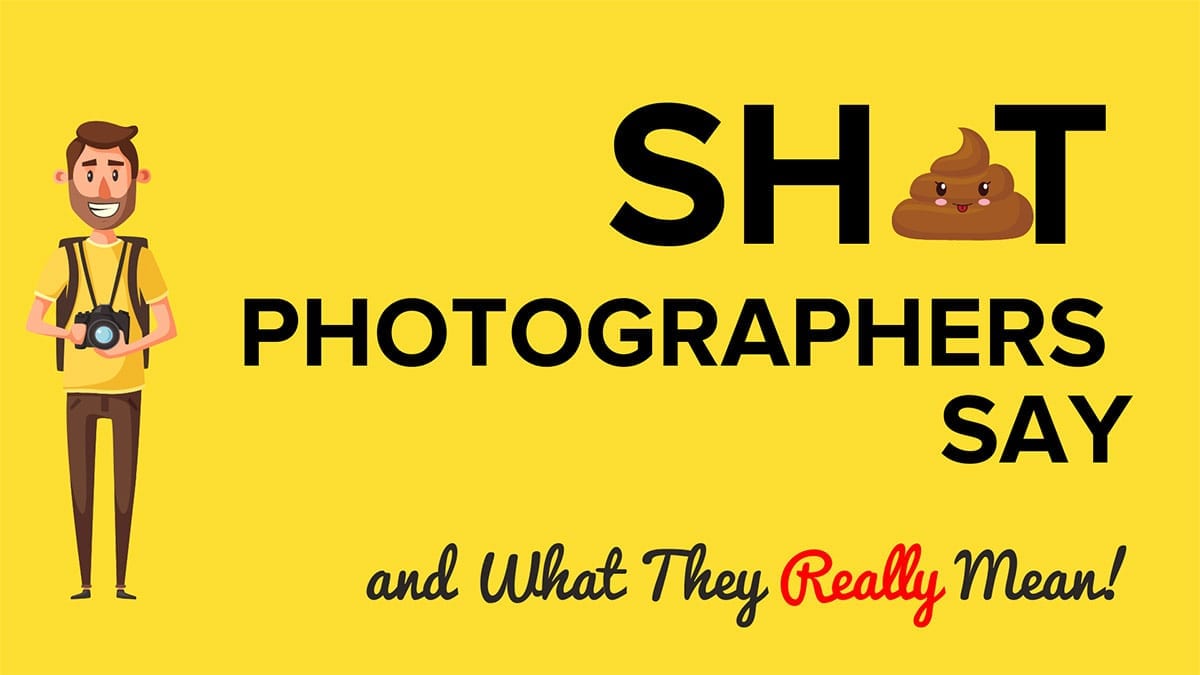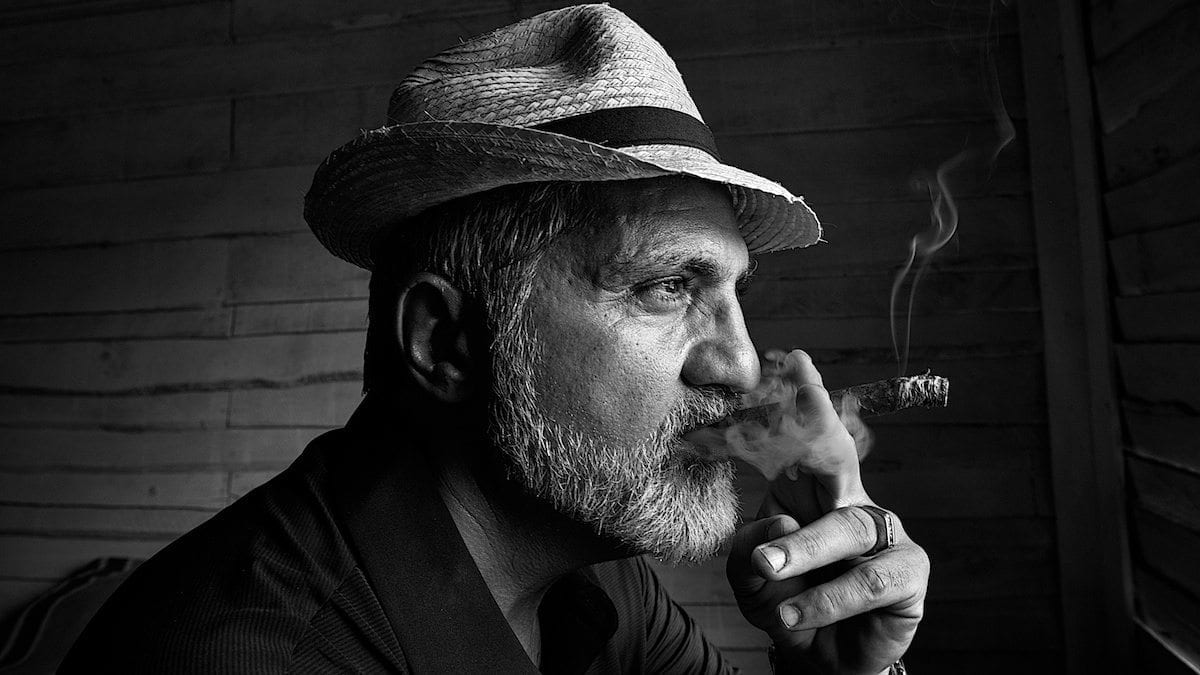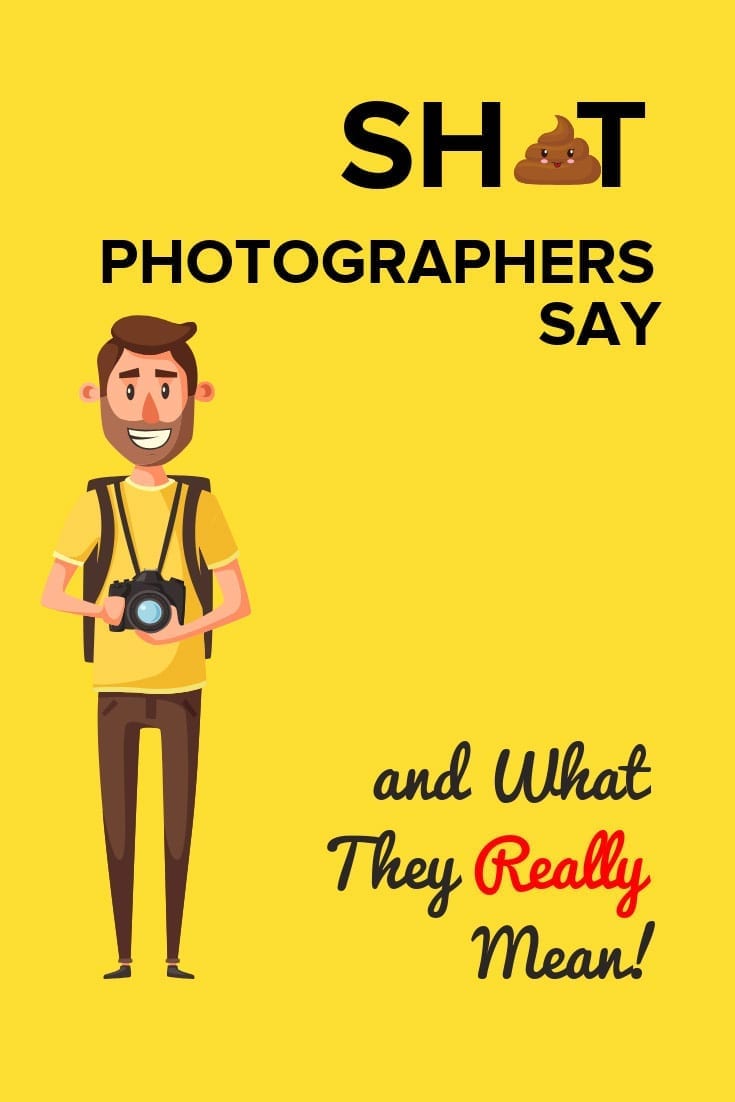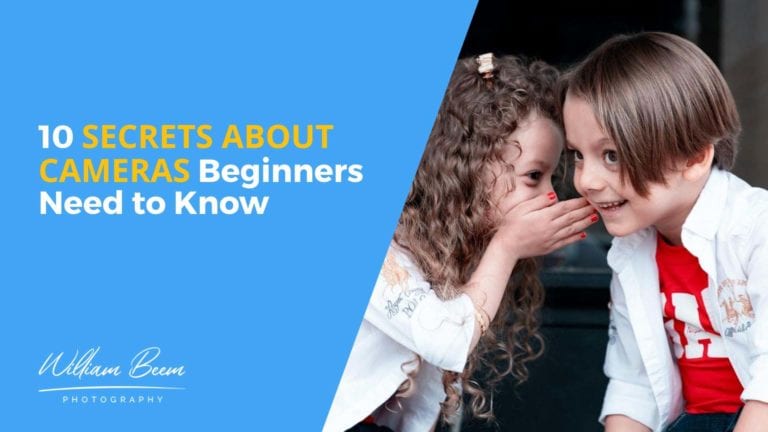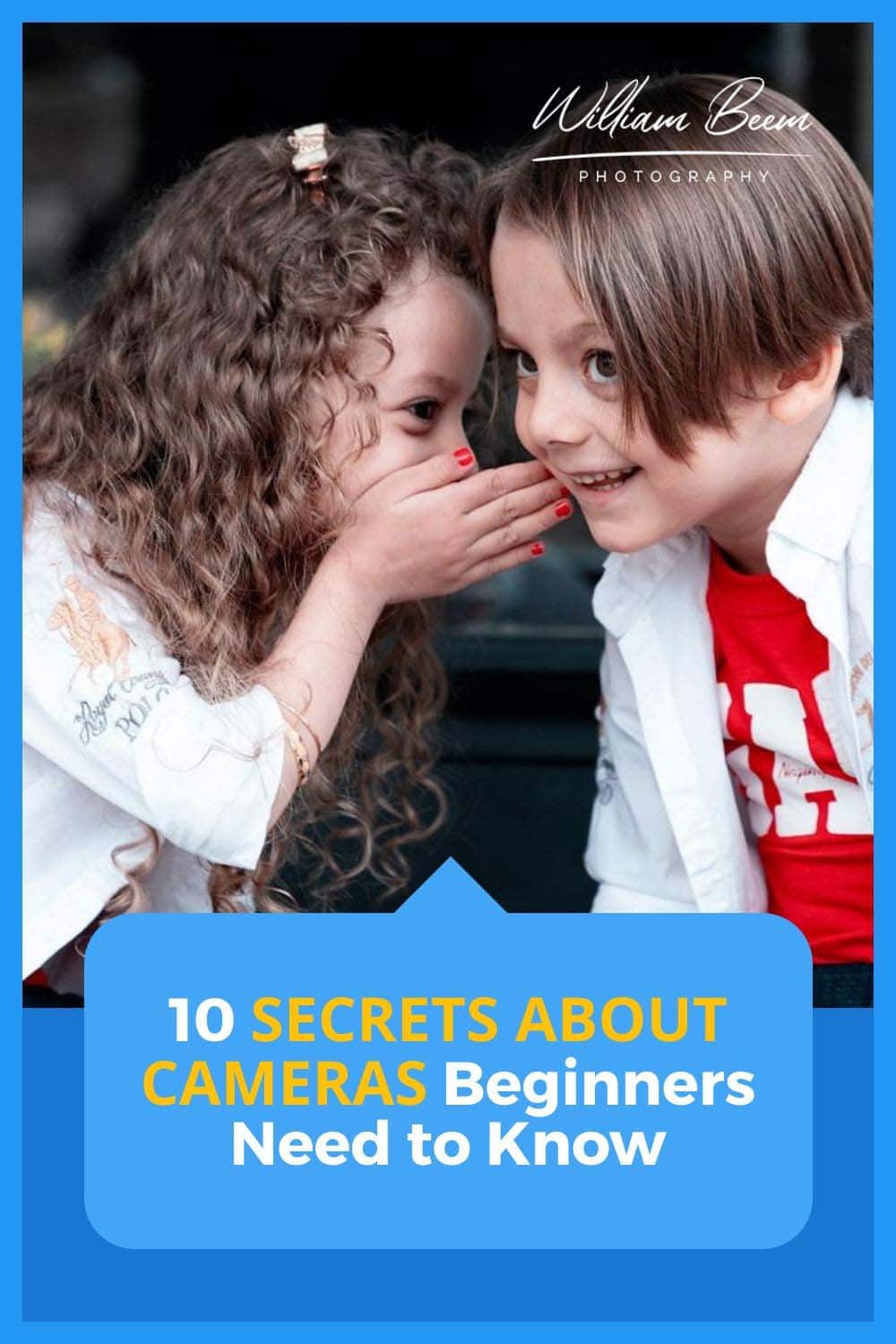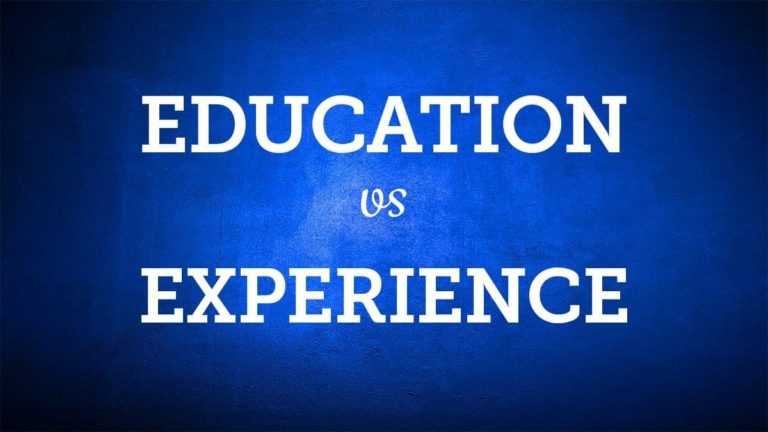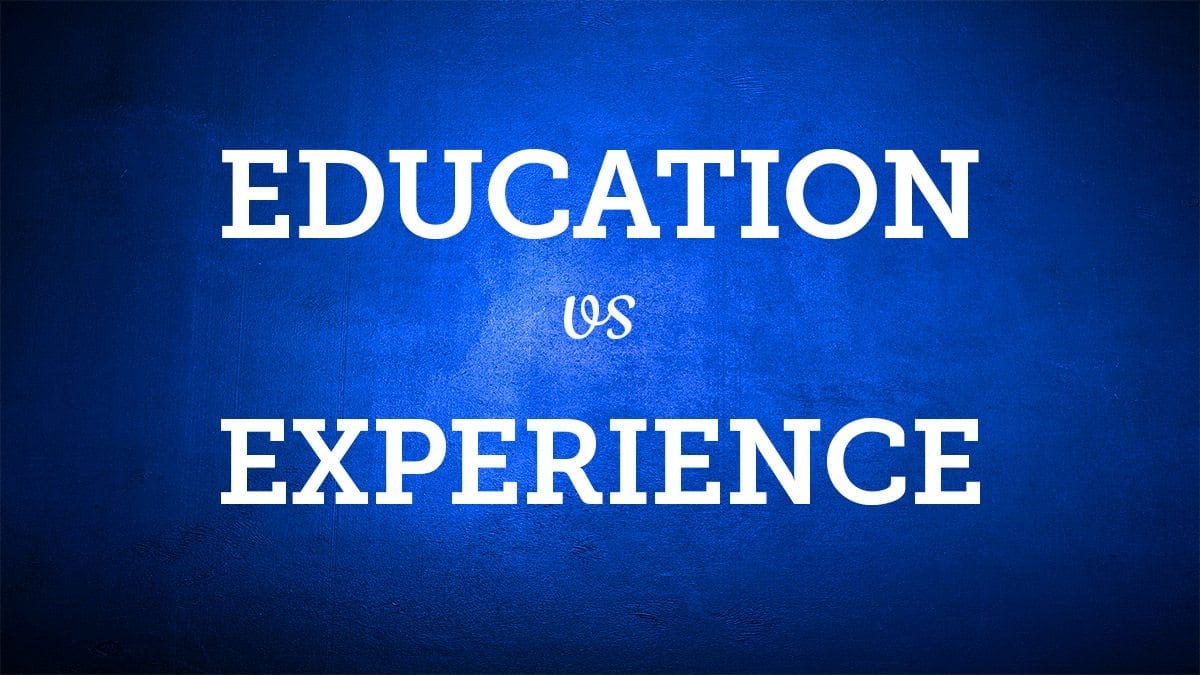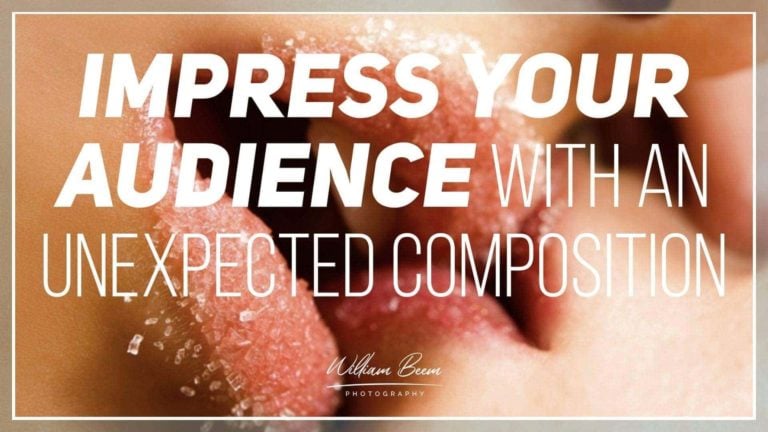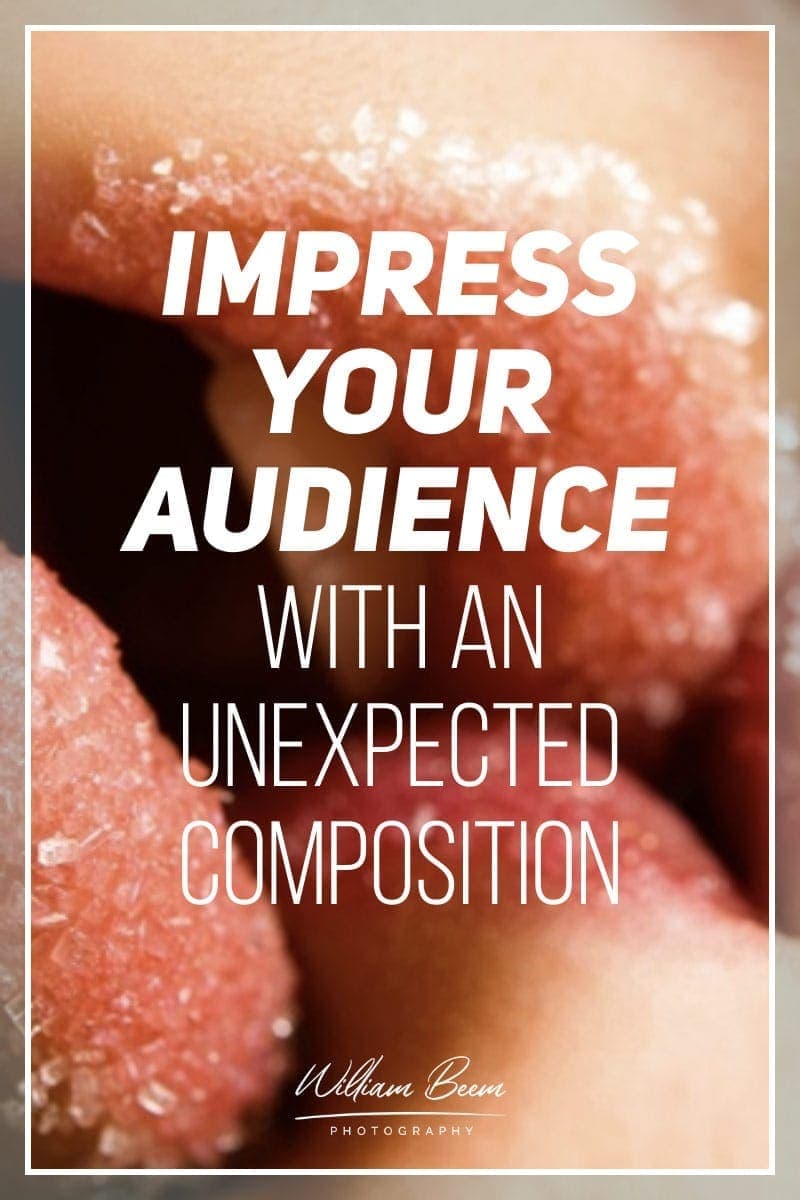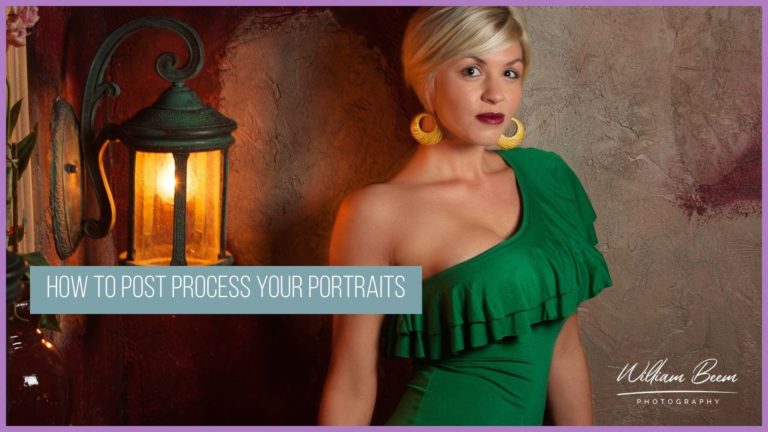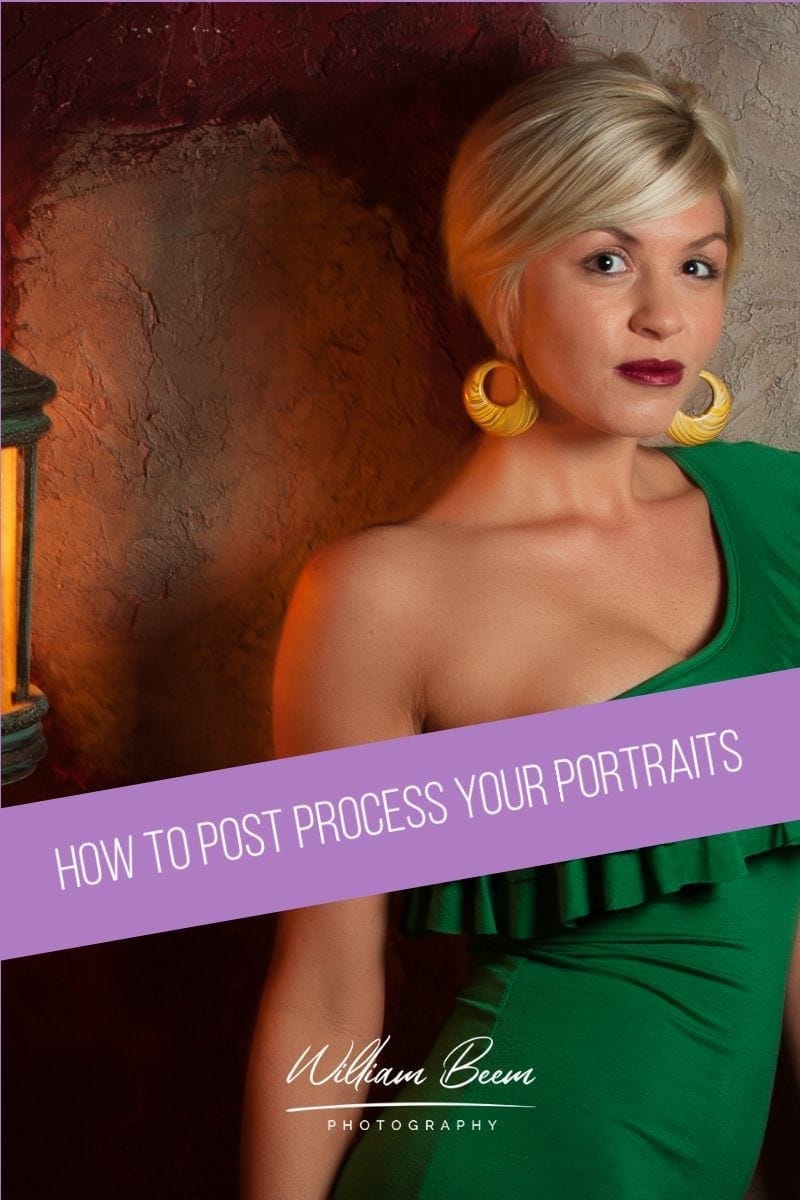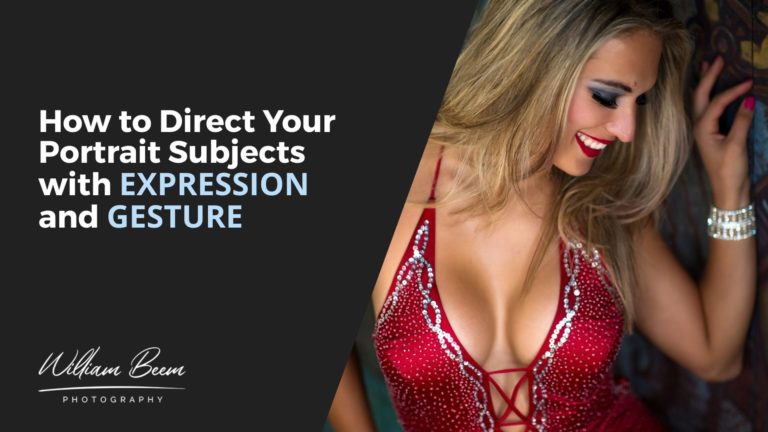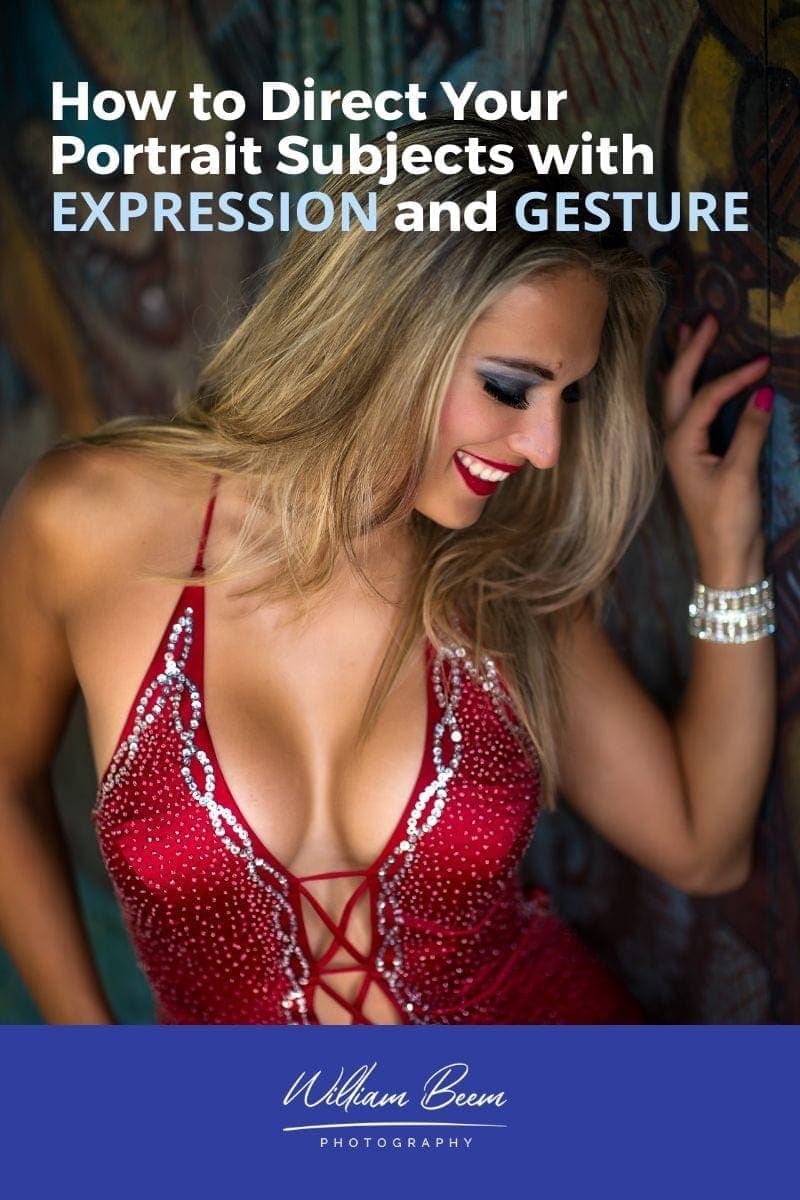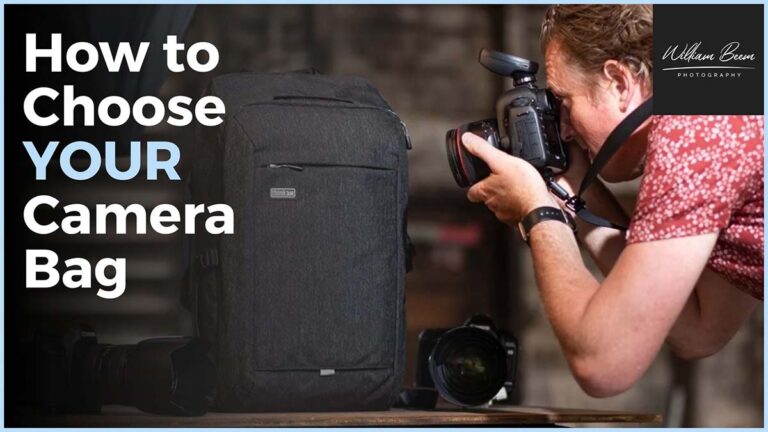Affiliate Disclosure: We earn a commission if you purchase through one of our links at no additional cost to you.
Sometimes the shit photographers say is amusing. That’s because they’re usually some hidden meaning behind a number of these common phrases. It never hurts to know some of the common phrases in photography and the sentiments behind them.
We intend for this post to be a bit humorous, but with just a pinch of truth.
A Few Things Photographers Say
If you hang around enough photographers, you’ll hear some or all of the phrases below. Lee and I shared our thoughts on the podcast about these phrases and the meaning behind them. In most cases, the true meaning is a bit hidden and borne of insecurities. The good news is that there’s nothing here that will derail your photography.
It’s just something to think about, and learn to see differently.
I only use Natural Light
Some photographers just won’t touch a flash. The innuendo here is that Natural Light is somehow superior to artificial light. There’s just one major flaw in that sentiment.
All light is natural.
What these folks are really saying is that they don’t know how to use a flash to get the look they want. You don’t need to wait on perfect conditions from the Sun to get beautiful light.
Want proof? Watch a movie. Hollywood is full of lighting masters who can bring any kind of light you want into a closed studio environment. They’ve studied the qualities of light and have the tools to whip the light into any appearance they need.
Professional photographers can do the same thing. That’s because clients expect results. If you hire a photographer to photograph a swimwear catalog on a bright sunny day, then the photographer needs to deliver the results, even if it’s raining. Otherwise, the client loses money by paying kill fees to models and other staff, while still having to reschedule the shoot for another day.
A good photographer uses the available tools to create whatever look he or she needs to deliver. That means using ambient light, flashes, light modifiers, gels and whatever else it takes to deliver the result.
There’s nothing wrong with using light from the Sun. It’s a free gift. However, being a photographer means solving problems and delivering results. If you want to tell a story, you need to use all sorts of methods to create the light you need – not telling everyone to wait for the next pretty day.
Just try and relax
Ever had your portrait taken? It’s pretty common to feel nervous in front of the camera. We all have our insecurities. A portrait freezes your likeness for others to study in a way that just doesn’t happen when we’re face to face.
So as you can imagine, the prospect may be a bit nerve wracking.
To be fair, it’s also a bit nerve wracking to be on the other side of the camera and have the responsibility to take a flattering portrait of someone. They put their trust in your. Not only do you have to manage all of the technical aspects of photography, but you also have to be a creative director and a trusted therapist at the same time.
With all of that pressure, more than one new portrait photographer saw their subject tense up and blurted out, “Just try and relax.”
That doesn’t work.
If anything, it makes your subject feel worse. It’s as if you’re telling them how tense they look, which magnifies their insecurities and ultimately has the opposite effect.
Portrait photography is about a collaboration and it means you need to develop a rapport with your subject. Take some time before the photos start. Get to know them and gauge how they feel. Find some common ground. Work to earn their trust.
How you do that depends upon your personality.
I’m a bit of a smart-ass. That means I’ve given my subjects math problems to solve. I sometimes tell jokes to crack them up. Other times I ask them to take on a character, so it isn’t really them that I’m photographing.
My success rate varies, and I can’t use the same technique on everyone. Different combinations of people require different ways of communicating to remove the stress and create some nice portraits.
You Can Always Fix it in Photoshop
There’s an entire site devoted to this phrase. It’s called Photoshop Disasters.
Do you really want to have one of your photos featured here? I hope not.
I think Photoshop is a wonderful tool. It’s perfect to help enhance or finish a photo. Things go wrong when you try to “fix” a photo in Photoshop. While it may be possible for some folks, there’s a hidden truth here.
Most of us are not Photoshop masters.
Even if we are, it’s usually better, faster and cheaper to just work to get the image right in camera. If there’s something you can correct by recomposing or moving around, do it. The things that take you seconds to do at the point of capture will save you hours in post processing.
Real photographers always get it right in-camera
The opposite of post processing is pre-processing. In other words, try to get the shot right in-camera, or eliminate problems at the moment of capture.
It’s good advice.
As with all good advice, sometimes it’s taken to extremes. Another favorite phrase from photographers is “straight out of camera (SOOC).” They get so excited about their results in-camera that they don’t think that they need Photoshop or any post processing.
Those folks are wrong.
Look, it’s exhilarating when you take a great photo and it looks beautiful on your screen or tethered to your computer. I love it when that happens. It’s just not the end of the road for a finished photo.
All photos need sharpening. You can tweak the levels or do some color correction/grading to make the photo even better. Post processing is to finish the great result that you got right in-camera. It’s not a weakness to use these tools.
However, it’s foolish to think you can’t benefit from them.
The light is all wrong
I love photographers, bless their hearts.
We have an innate and uncanny habit of evaluating the quality of light in every place we visit. Photographers look for color and quality of light in every restaurant, park, hotel or place they visit. We can’t help ourselves.
With that observation comes critique.
Sometimes there isn’t enough light. It’s coming from the wrong direction. We think the light has a color cast. I can’t take photos in this harsh light!
The truly fun part of this phrase is that photographers use it even when they don’t have a camera in hand.
Personally, I love the idea that photographers pay attention to their environment. It’s good to notice the light and evaluate it, even if you aren’t planning on taking photos. That practice will help you solve problems when you’re prepared for a photo session.
The real response to this statement is, “How would you fix it?”
There is always a way to compensate for lighting that isn’t appropriate for our purpose. Also, keep in mind that the environmental light you find at a location may also be part of its charm.
I think I’m ready to go pro
No, you’re not.
That’s my standard response to this statement. It isn’t just to be difficult. Instead, it’s to see if the person who just made this claim really thought about what it means to be a professional photographer.
If they start talking about the quality of their images, then they aren’t ready to go pro.
Photography is about 20% of being a professional photographer. The rest is business, marketing, therapy and for some, copious consumption of cocktails.
In other words, going pro means you want to start a business. So you need to be good at business. You need to know how to find clients. Once you find them, you need to deliver results on a consistent basis at the quality they need, and in a timely manner.
There are plenty of amateur photographers who I think can craft a better photo than some professional photographers I know. However, they can’t do it over and over. They can’t find clients. They can’t manage a budget. They haven’t thought about all the extra costs and taxes that go with operating a business.
Also, they may not truly have the desire to do all the grunt work that goes with it. Life as a pro photographer includes more than just hanging out on a nice beach with swimsuit models (unless you’re Joey Wright).
If you watch Joey’s Swimwear Photography tutorial, you’ll see that he has to think of much more than his work with swimwear models. You’ll see that he isn’t using the latest gear. Yet he delivers stunning results for his subjects and clients. His tutorial is more than just portrait photography. It’s a guide to being a professional photographer.
It may change your mind.
Your photo is Copyrighted as soon as you click the shutter.
Photographers love to talk about Copyright. Not as many of them are so good at actually registering their photos with the US Copyright Office.
The claim that your photo is Copyrighted as soon as you click the shutter is somewhat true. However, nothing beats having a registered copyright to protect your photos from infringement.
One reason is that having a valid registration allows you to seek MUCH higher damages from an infringement.
Another reason is that a Copyright lawsuit is literally a federal case. The first thing a judge wants to see in this case is a valid registration at the US Copyright office. Without it, you don’t really have any proof that the photo in question is yours.
Do you want to get in a battle of counter claims over authenticity of your copyright with a trained and experienced attorney? No, of course not. What you want to do instead is provide the defense of overwhelming evidence that you’ll win in trial and convince them to settle with you.
Many of those settlements (not mine) are in the five figure range. Mine was a case of a lousy attorney. I still got a settlement in the four figure range, which is much better than the $35 I spent to register my photos.
Zoom with your feet
If you shoot with prime lenses, you’re going to hear someone tell you to zoom with your feet. Basically, that means you have to get closer to or farther away from your subject by stepping around.
Makes sense.
At least it makes sense until someone gives you this same advice when you have a zoom lens. After all, having a zoom lens tends to obviate the need to walk backward and forward.
Or does it?
When you change your zoom, you also change the angle of view. The angle of view is angle of coverage that a lens can make. Wide angle lenses give you a wider angle of view in your environment, where telephoto lens tend to have a shallow angle of view.
Sometimes people will zoom in to get closer to their subject and completely forget about the impact it has on the angle of view.
So experiment a bit.
Spray and Pray
The concept of “spray and pray” is to hold down your shutter button, let the frames roll off, and hope that you get a keeper. It’s the machine gun approach instead of the sniper approach. It’s hope over skill.
There are some problems with this approach. Lee noticed that photos shot in Continuous mode are never as sharp as photos taken in a single click.
It makes sense, even if you have a mirrorless camera.
Hand-holding a camera is fraught with shaking hands. You may think you have rock steady hands or a really fast shutter speed, but it doesn’t matter. Those little movements, which are compounded for DSLR shooters who have a mirror flapping about, are degrading the quality of your photos.
Doesn’t matter if you do this with an iPhone or a D850.
The key problem with this approach is that you deny yourself the opportunity to anticipate the right moment and get the best result possible. It takes practice, but it gives better results.
Get closer and fill the frame
Photos with subjects that fill the frame really have much more impact than if your subject is surrounded by distractions. Filling the frame can be good advice.
Except when it isn’t.
What really matters is how you intend to use the photo.
Let’s take this photo as an example.
Beautiful, isn’t she?
This was a snapshot and I only had an instant to take the photo. Part of me wishes I filled the frame with that big head. Then I wouldn’t have some stranger walking in my background.
On the other hand, suppose I needed to use this photo for a Pinterest image? Well, I can do that with the frame I have. Couldn’t do it if that face stretched wide across the whole frame.
Some photographers proudly say they never crop their images. They have their reasons and it doesn’t matter to me.
I tend to like shooting a bit looser, though. The reason is that I have more options to crop and use a photo in different ways. With a 36 megapixel camera, I can use this for Pinterest or a poster. I can make a square crop. Basically, I have options.
I think the phrase “get closer and fill the frame” has more to do with your final result than the frame you capture.
I prefer Black and White photography
Please don’t think that I don’t like Black and White photography. I do, under some conditions. My view is that Black and White photography works best for very minimalist photos.
Sometimes color gets in the way. After all, color is information, and more information changes your thought processes.
However, I honestly don’t believe that every photo is better in Black and White. I generally don’t prefer Black and White over color, either. I love color.
So when I hear a photographer tell me that he sees things in Black and White, I have the raise some doubts in my head.
What I generally find is that Black and White can turn into an excuse for not having a good grasp of color. Black and White hides all the sins of bad color photography.
Poor white balance. Oversaturated colors. Colors that don’t work well together.
Life is much simpler in Black and White, but it isn’t preferable.
What settings are you using?
I love this question! It’s one of the most honest questions a photographer can ask, and I will always answer whenever I’m asked. That’s because the people who ask about settings are trying to learn. They may have an idea of what settings to choose, but perhaps they’re a bit unsure if there is a better way.
Not necessarily. When Lee and I shoot side by side, we aren’t using the same settings. We each get our own results, and we both admire what the other one of us captured.
There are some photographers who absolutely will not share their exposure or other settings for fear someone else could copy them – to get the same photo.
Now that’s blatant insecurity.
The exposure triangle is a set of cantilevers. We can get a correct exposure by moving the variables of ISO, Aperture and Shutter Speed about. Your result won’t be exactly the same, though.
Sometimes you want more or less depth of field. Other times, you may want to freeze a frame or allow some motion blur.
These are creative choices. As people learn photography, it’s good to let them ask you about your settings and explain how you got them. I had some good mentors for my photographer who shared their experience and wisdom. We should all do the same for those who are asking for some new information.
Help a photographer out.
How do I get more Instagram followers?
I see this question on forums all the time. There are YouTube videos dedicated to getting more Instagram photographers. I’ve tried to answer this question a few times, too.
You know what, I don’t really have a good plan for Instagram. It’s fun to see the work of others, but I’m not entirely worried about how many people follow me. You can tell because I don’t upload photos to social media much anymore.
Mostly, I’m tired of chasing numbers of followers and spending a lot of time in the process. Maybe I’ll crack the code in the future. For now, it’s a mystery to me.
All I know is that I’m tired of people who follow me, only to unfollow me shortly afterward. Bots. Damn bots.
Shit Photographers Say Can Be Cliché
There are a few things that didn’t make the cut for the podcast. There’s one cliché phrase that I hear over and over again, and I hope we move past it rather soon.
…to the next level.
This phrase is so meaningless, and yet extremely pervasive. I even heard Tim Cook use this phrase at the last Apple event. What in the world is the next level? How does anyone know what level I’m at, and were I should go next? Is it their next level or mine?
I hate this phrase because it’s vague, meaningless and absolutely useless. It tries to make a promise and delivers absolutely no value at all.
Yet it’s all over YouTube and other places.
I don’t know who is responsible for measuring these levels, but they’re doing a very poor job of marking them for us to know where we are and what is the next level.
Subscribe to The Photo Flunky Show
Thank you for listening to The Photo Flunky Show. Make sure you get every episode by subscribing.
iTunes – https://williambeem.com/itunes
Stitcher – https://williambeem.com/stitcher
Google Play – https://williambeem.com/googleplay
Blubrry – https://williambeem.com/blubrry

